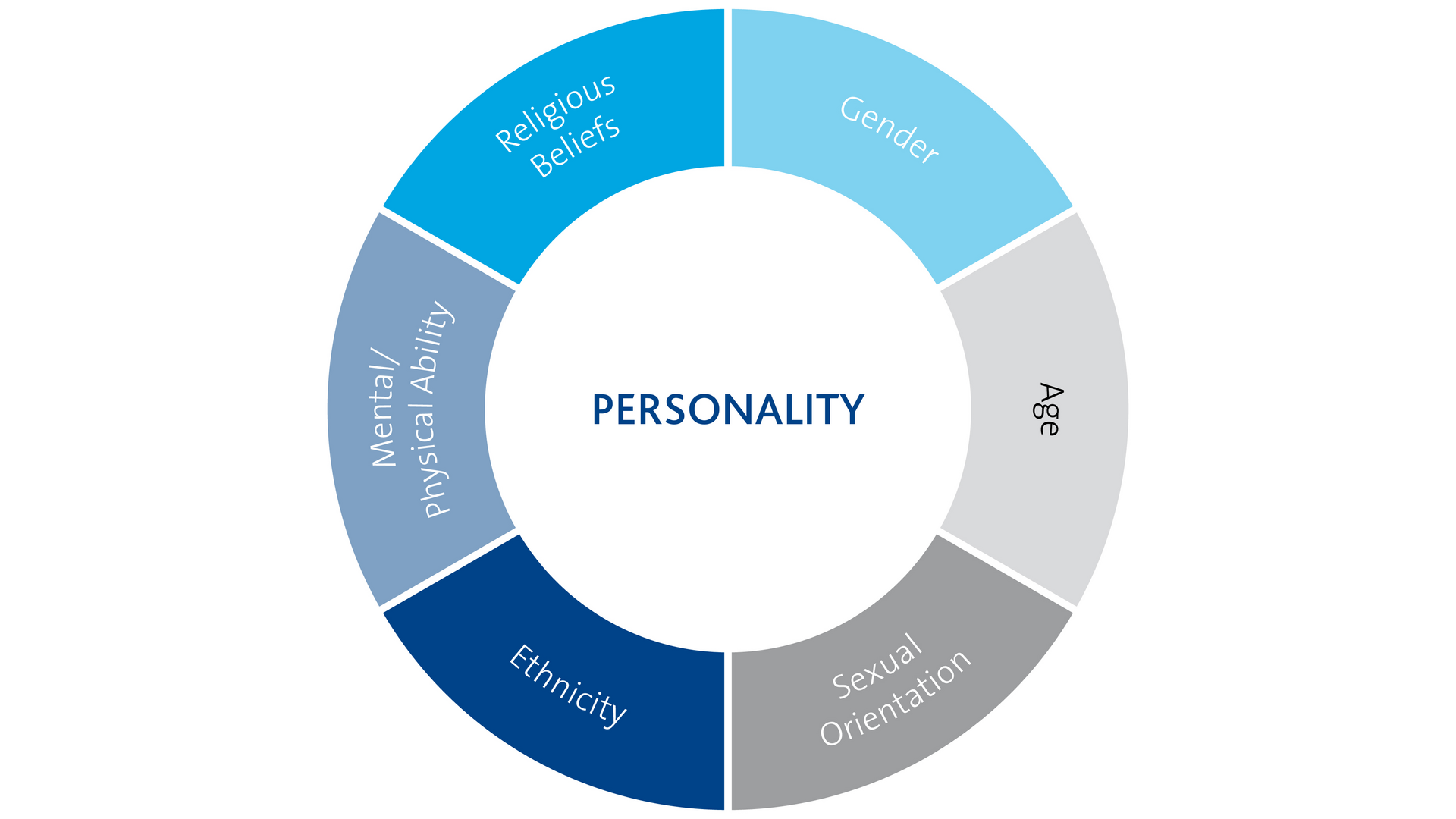At first, “Diversity and Inclusion” sounds somewhat baffling. But it actually describes an aspect of corporate culture that, in fact, has a long tradition at Freudenberg – one that is based on an appreciation of the diversity of people.
Diversi- what?
All of us have come across the term “Diversity” at some point or another. Perhaps most also have a vague idea about what it means: variety, difference, the entire range of human characteristics. But what precisely is diversity?
Current social science thinking describes diversity as the individual, social and structural differences and similarities of human beings. Researchers have agreed on six core dimensions that demonstrate the uniqueness of a person and how diverse society is as a result.

Freudenberg takes a clear stand against discrimination and creates a corporate culture of mutual respect and appreciation.
Marion Prager, Vice President Global Talent Management
“These six core dimensions also underlie Freudenberg’s D&I efforts,” explains Marion Prager, Vice President Global Talent Management. “Freudenberg takes a clear stand against discrimination and creates a corporate culture of mutual respect and appreciation.”
Why is this important for Freudenberg?
Naturally, companies with diversified workforce enjoy certain business advantages. The world in which we live, act and work is becoming increasingly complex. A variety of different perspectives is necessary to understand a problem holistically – whether in development, production, or sales.
Companies that reflect the demographics of their customers and their home countries in their own workforce are also more successful. They have a greater understanding of target groups from the respective cultures and often maintain a more trusting relationship with their customers.
Each person looks at a particular issue through their own lens and allows their experience, history, and worldview to flow into the problem-solving process. Individual competencies, characteristics and cultural backgrounds are then harnessed to solve new challenges. “When people from different backgrounds come together and work on a solution, they can learn from one another and complement each other,” says Prager. “This is when real innovation occurs.”
Dancing together
As a globally active company, however, it is also important for Freudenberg to fulfill its responsibility for society. The goal is to prevent discrimination and create equal opportunities, since this is fair and benefits everyone in society at large.
Simply put, it is not enough to only have diverse teams, we need to make sure that the team members have the opportunity to fully engage and contribute.
Sarah O'Hare, Head of Corporate Human Resources and Regional Representative North America
Freudenberg aims to create, promote, and sustain a diverse and inclusive work environment where everyone can be their authentic selves, and feel valued, respected and heard. “This is why we go one step further.” explains Sarah O’Hare, Head of Corporate Human Resources and Regional Representative North America. “Simply put, it is not enough to only have diverse teams, we need to make sure that the team members have the opportunity to fully engage and contribute. Only then do we achieve a full potential of our diverse organization. Many employees have heard me quote diversity expert Verna Myers: ‘Diversity means being invited to a party – inclusion means being asked to dance, too.’ And each one of us plays a role in creating and nurturing that culture of inclusion.”
How can this succeed?
Freudenberg therefore took the decision to establish a community to serve as a sounding board and a champion for specific D&I activities. The D&I community is a group of volunteers representing all Business Groups and a cross-section of functional roles, as well as the different world regions. The group also serves as a multiplier in their respective Business Groups.
A strategic umbrella project, sponsored by Marion Prager and led by Adriana Leite, Senior Regional Human Resources Manager, has also been up-and-running since April 2022. "In short, we want the project to support, coordinate and structure all measures and activities across the company," explains Adriana Leite.
Declan Fitzsimons, Senior Affiliated Professor of Organizational Behavior at INSEAD Business School also provides valuable counsel on the topic of D&I. He developed a learning program, named “Creating a Culture of Inclusion” for Freudenberg.
Understanding inclusion as a process
“As with many learning experiences, when it comes to D&I, we have to ask ourselves: Do we want compliance, or do we want commitment?” says Makoto Makabe, Director Corporate Learning & Development. “Quite clearly, when it comes to D&I, we want commitment. But you can’t mandate commitment or engagement through a training. Rather, you win people´s hearts and minds by engaging them in a meaningful dialog with each other.” The issue is not that a specific project or training course is completed at a certain point in time. It’s about making progress together little-by-little along the same path. To achieve this, Freudenberg consistently places its focus on new diversity and inclusion topics.
Rather, you win people´s hearts and minds by engaging them in a meaningful dialog with each other.
Makoto Makabe, Director Corporate Learning & Development
Enabling fair participation
“It is important that the progress we make is both transparent and accessible to everyone. We want to involve all employees,” says Adriana Leite. “Participation is an essential aspect of D&I.”
***
Copyright header-graphic: Tim Mossholder/unsplash
